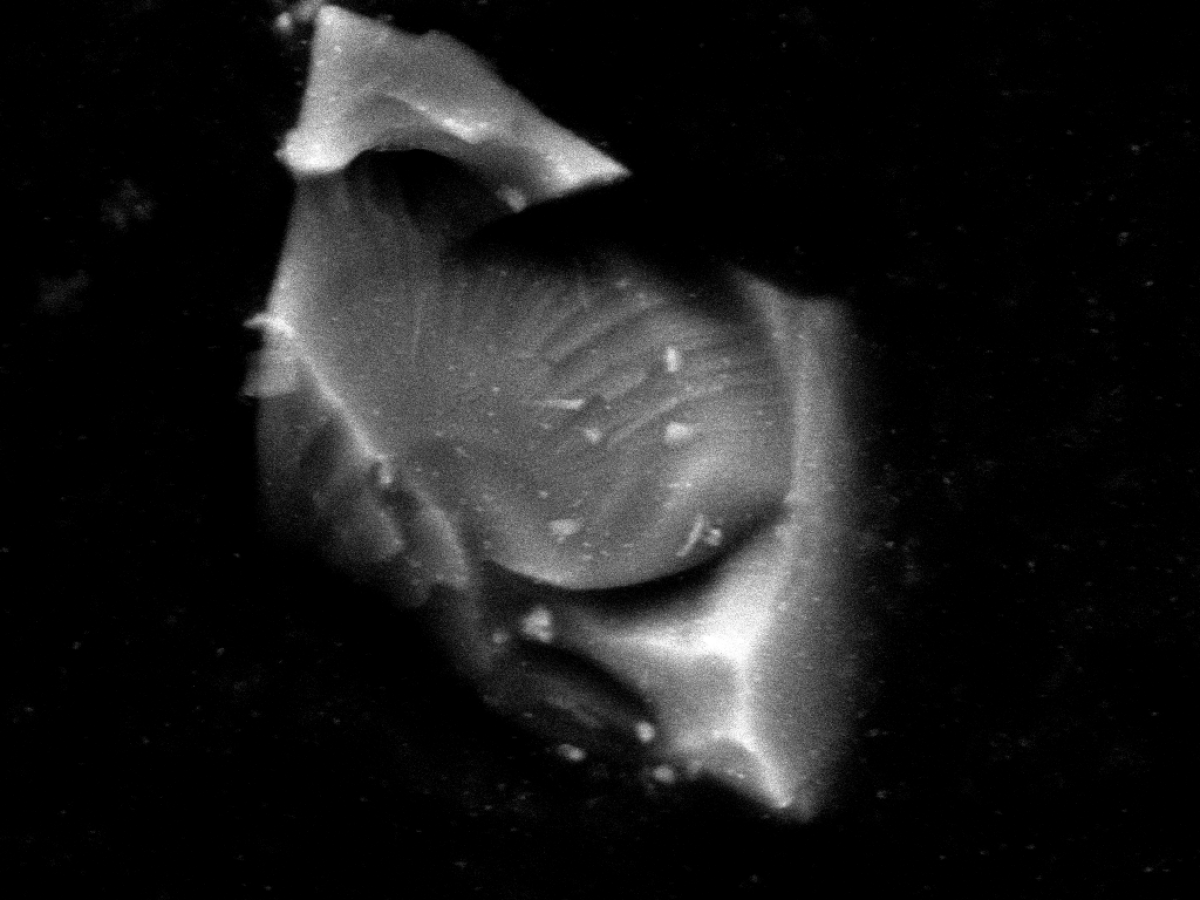
Microscopic image of an engineered stone dust particle. Image taken by the University of Adelaide Microscopy Facility.
New research will investigate ways to protect hundreds of thousands of Australian workers who work with engineered and traditional stone materials from silicosis. The projects build on nearly 100 years of research by the University of Adelaide into the deadly lung disease.
“There are at-risk workers who are routinely exposed to silica dust and while the upcoming ban on the fabrication of engineered stone products and tighter regulation of work with silica will help protect many of these workers, others are still at risk of this serious disease,” said Associate Professor Sharyn Gaskin, who is the Director of the University’s Exposure Science and Health Laboratory, in the School of Public Health.
“It’s our hope that our research program will lead to a better way to minimise the dangers of working with silica and allow preventative measures to be taken to protect the health of workers.”
A study led by Dr Chandnee Ramkissoon will explore the toxicity of dust particles from low and zero silica engineered stone products to determine if they could still be dangerous to lung health.
“There are concerns that replacing the crystalline silica content of engineered stone with other compounds in these new products could also cause a significant adverse lung response.” Dr Chandee Ramikissoon, School of Public Health, University of Adelaide
“Considering the enormous harm that engineered stone has caused workers, the perceived ‘safety’ of these emerging stone benchtop materials must be investigated,” she said.
A type of long-term lung disease, silicosis is caused by inhaling tiny particles of silica – a common mineral found in sand, quartz, and rock. The particles damage the lungs, resulting in symptoms such as ongoing shortness of breath and a persistent cough that worsens over time. The disease dates back to ancient Egypt but has re-emerged at crisis levels in recent years due to the popularity of engineered stone.
“In Australia we are seeing a large number of young construction workers being struck down by silica-related disease, for which there is no cure,” said Professor Dino Pisaniello, an Adjunct Professor in Occupational and Environmental Hygiene at the University of Adelaide’s School of Public Health.
“The University of Adelaide has dedicated over 100 years of research to understanding this illness, from our earliest Nobel laureate to now. These discoveries have led to major policy shifts, with Australia being the first country to ban engineered stone.”
The University’s connection with silicosis-related research stems from Sir William Laurence Bragg, the youngest Nobel laureate in physics and a graduate of the University of Adelaide. He was fascinated by the crystal structure of silicate and his early work in the 1920s revealed the great diversity in silicate structures, and close packing of oxygen atoms in open patterns, possibly explaining their unique chemical properties. It was later argued that his research provided valuable clues on the toxicity of silica.
More recently, beginning in 2017, Adelaide Exposure Science and Health (AESH), in the University’s School of Public Health, conducted research into the material science, exposure science and toxicology of engineered stone which comprised of crystalline silica, organic resin and metal pigments. As a result, the University became a major contributor to the international scientific literature and was heavily cited as the momentum for restrictions and a ban on engineered stone grew.
In 2023, the University of Adelaide was commissioned by Safe Work Australia to guide national decision making on a prohibition of engineered stone. The final decision rested heavily on the fundamental work undertaken by AESH, in conjunction with the School of Physics, Chemistry and Earth Science. The ban comes into effect in Australian states and territories this month.
“This year, as we celebrate the 150th anniversary of the University of Adelaide, our experts are continuing to make a difference in the field of silicosis-related research through ongoing projects that will save lives,” said Professor Pisaniello.






